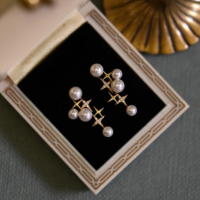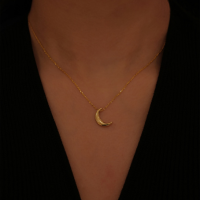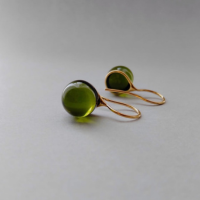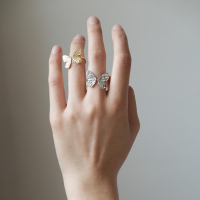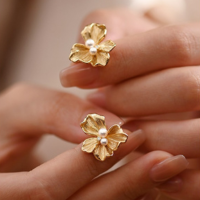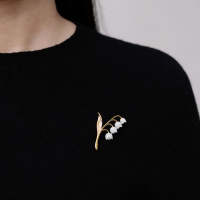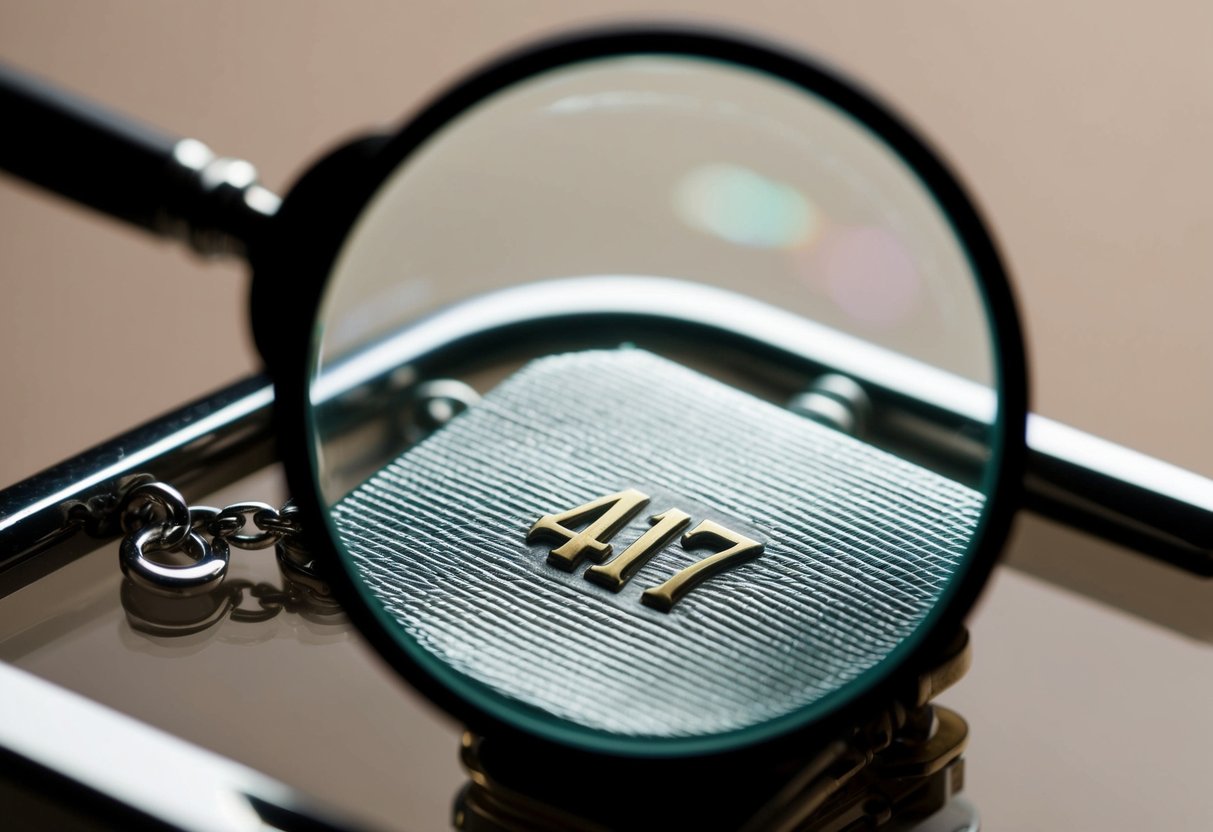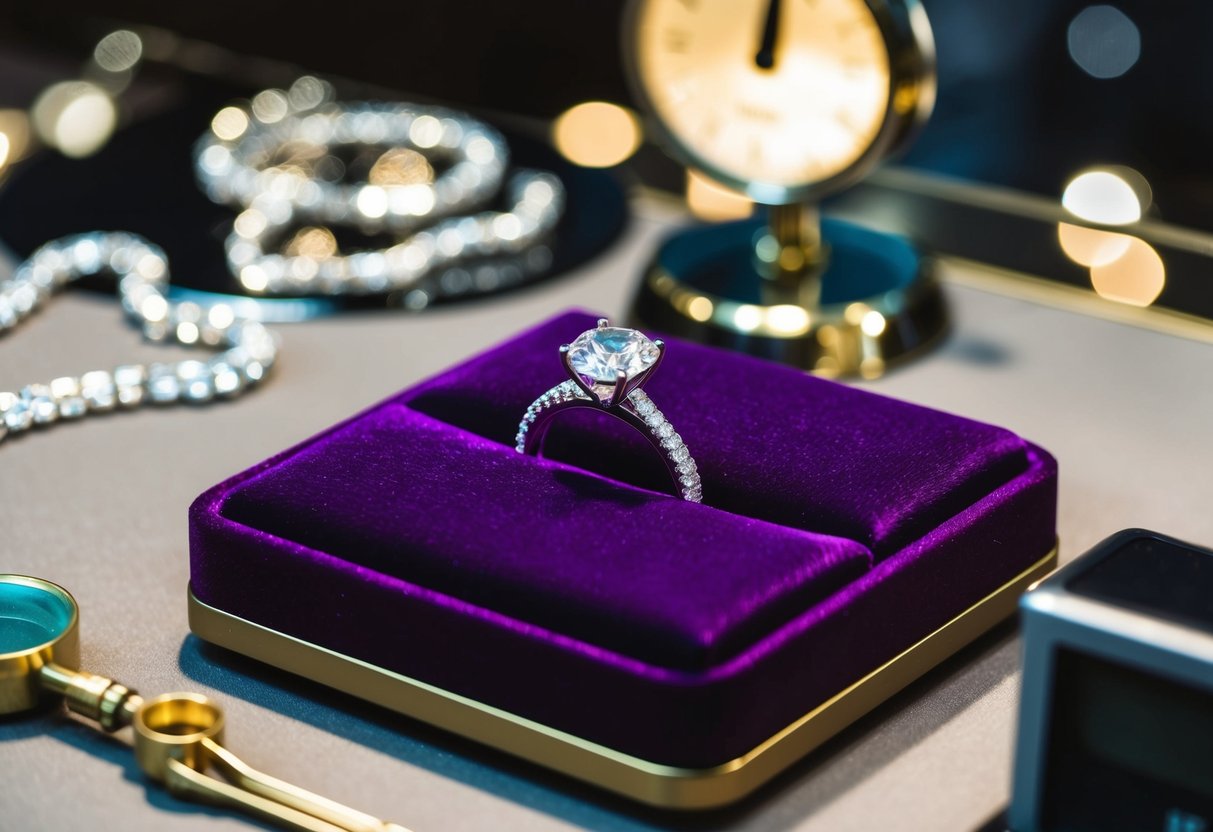
What Does CTW Mean in Jewelry
Check out our personalized jewelry collections! (kids drawing jewelry, coin jewelry, wire jewelry, fingerprint jewelry, handwriting jewelry, and more)
When it comes to buying or evaluating jewelry, the term "CTW" often pops up. CTW stands for Carat Total Weight, which refers to the total weight of all diamonds or gemstones in a piece of jewelry. This detail helps buyers understand the overall gemstone presence in a ring, bracelet, or any other piece.
We know that distinguishing between CTW and the weight of a single gem can sometimes be tricky. It's crucial for those of us passionate about jewelry to grasp what these measurements imply. Knowing the CTW helps us better determine the piece's value and ensures we are making informed choices.
Knowing how to talk to jewelers about CTW can also make the purchasing process smoother. Understanding the total weight and how it impacts price guides us in selecting jewelry that matches our desires and expectations.
Key Takeaways
- CTW means Carat Total Weight.
- It affects the overall value of jewelry.
- Knowing CTW aids smart jewelry purchases.
Understanding CTW in Jewelry
In jewelry, CTW is an important term that affects value and choice. Let's look at what CTW means and why it matters when picking your next piece.
Definition of CTW
CTW stands for Carat Total Weight. It's used to describe the combined weight of all the diamonds or gemstones on a piece of jewelry.
For example, if a ring has three diamonds, the CTW adds up the weight of each stone. Carat is a unit of weight where one carat equals 200 milligrams.
Knowing CTW helps us understand the size and value of diamond pieces. Bigger carat weights usually mean higher prices, but it's not just about size. Quality of each stone is just as important.
Importance in Jewelry Selection
When shopping for jewelry, CTW gives us a fuller picture of what we're buying. It helps us compare pieces with more than one stone, making it easier to decide which offers the best value.
A higher CTW doesn't always mean a better piece. We should also look at the size, cut, and clarity of each stone. These factors work together with CTW to determine the overall beauty and value.
Understanding CTW makes us smarter buyers, letting us choose pieces that fit our taste and budget. Whether we're looking for a dazzling diamond ring or a subtle necklace, CTW is a key part of our decision process.
Components of CTW
In jewelry, "CTW" stands for Carat Total Weight. It includes the sum of carat weights of all diamonds or gemstones in a piece. Knowing about CTW helps us understand the value and quality of jewelry. We can explore the main parts of CTW, which are the individual carat weight measurement and how the total weight calculation is performed.
Carat Weight Measurement
Carat weight is key in jewelry. Each gemstone is measured in carats, which tells us how big it is. One carat equals 200 milligrams. Small stones are often less than one carat and measured in points. For instance, 50 points equal 0.50 carats.
We often notice carat weight because it affects the price and size look of the jewelry. Some enjoy larger stones for their presence, while others look at the sparkle from smaller, well-cut stones. The accuracy in measuring carats is vital. It ensures we're getting exactly what we pay for.
Total Weight Calculation
Total weight calculation comes next. Here, all stones in the jewelry piece are combined. If there are multiple stones, each one’s carat weight is added up to form the CTW. For example, if there are three stones of 0.30, 0.50, and 0.20 carats, the CTW equals 1.00 carat.
Sometimes, jewelry might have many small stones set together. They add up, contributing to the CTW. It's important because it affects not only the look but also the value of the entire piece. We always compare CTW with individual carat weight when shopping. This helps us understand how much of the total weight comes from the center stone compared to smaller accents.
CTW vs. Carat Weight
Understanding the difference between CTW (Carat Total Weight) and carat weight helps us make informed jewelry choices. CTW refers to the combined carat weight of all stones, while carat weight is the size of a single gem. Let's discover how these terms are used.
Individual Stone Weight
When we talk about carat weight, we're focusing on a single gemstone. This measures the stone's size. One carat equals 200 milligrams, which is 0.2 grams. This unit helps us gauge the size of individual gems in pieces like solitaires.
Understanding the carat of a single stone is crucial in evaluating its value. Larger carat weights typically mean more expensive gems, provided other quality factors like color and clarity are equal. In a piece with multiple gems, like an engagement ring with a prominent center stone, this individual weight is often highlighted in descriptions.
Overall Piece Assessment
CTW stands for Carat Total Weight. This term includes the sum of all carats of the stones in a piece. For instance, in a diamond bracelet with several diamonds, the CTW tells us how much the stones altogether weigh.
This term can be crucial for settings with multiple small stones. The CTW gives a sense of the overall sparkle and presence. It's particularly relevant for styles where smaller stones might otherwise seem less significant. Knowing CTW lets us understand the piece's full stone value rather than just cataloging each smaller gem.
The Impact of CTW on Jewelry Value
Carat Total Weight (CTW) plays a significant role in determining the value and appeal of a piece of jewelry. It affects both market assessments and personal perception.
Market Value Considerations
When we talk about jewelry value, CTW is a key factor. It refers to the total weight of all diamonds in a piece. Higher CTW often means a higher price. Jewelers and buyers consider CTW when deciding on the worth.
For example, a ring with 2 CTW typically costs more than one with 1 CTW. Buyers are willing to pay for the total brilliance that comes with additional weight. CTW isn't the only factor; cut, clarity, and color also matter. Yet, CTW is a primary driver of price.
Perception of Size and Brilliance
CTW impacts our perception of a jewelry piece's size and sparkle. More diamonds or larger stones can make jewelry look impressive. A necklace with a high CTW seems more dazzling and luxurious.
We often associate a higher CTW with elegance and sophistication. A sparkling bracelet that catches the eye might have a carefully calculated CTW. It’s not just about sparkle, though. Craftsmanship and design enhance how CTW influences our perception.
Evaluating Jewelry with CTW
When buying jewelry, understanding CTW (Carat Total Weight) is essential. It helps us judge the value of pieces and assures we get what we pay for. Let's explore the quality factors and the importance of certification.
Quality and Grade of Stones
The quality of a jewelry piece is largely defined by the grade of the stones within. When evaluating CTW, we look at each stone's cut, clarity, color, and carat weight, known as the "Four Cs." Higher quality stones will have superior cuts, showcase brilliance, and contain fewer inclusions. They also boast vibrant hues.
While CTW gives the total weight, individual stone details matter too. A piece with a higher CTW doesn't always mean better quality. Understanding and inspecting the Four Cs allow us to differentiate between superior and less desirable stones. Trustworthy jewelers will provide detailed appraisals for this.
In evaluation, comparing similar weights with varying qualities can help us make informed decisions. It ensures the piece meets our expectations and reflects its price.
Verification by Certification
Certification is a key step in verifying CTW claims. Reliable certifications from reputable organizations, such as GIA (Gemological Institute of America) or AGS (American Gem Society), attest to the quality and authenticity of stones in a piece.
These certificates include specifics like the Four Cs for individual stones within the CTW. They provide assurance, confirming the stones are as described by the jeweler. This documentation helps us validate the value and authenticity of our purchase.
Certificates also offer peace of mind, especially when investing in high-value items. With certification, we avoid discrepancies between what is advertised and what we receive. We can confidently buy knowing the piece is genuine and accurately represented.
Communicating with Jewelers about CTW
When talking to jewelers about CTW, it is crucial for us to clarify any uncertainties. We should focus on asking the right questions and understanding the terms they use. This helps in making informed decisions about our jewelry purchases.
Questions to Ask Retailers
When discussing CTW (Carat Total Weight) with jewelers, we should ask clear questions. One important question is how the total carat weight is distributed among the stones. Knowing the size of each stone can give us a better idea of the jewelry's appearance.
We should also inquire if CTW includes all stones or just the main ones. Retailers might count accent stones differently, so understanding this will help in getting the full picture. It's wise to ask if the setting affects how CTW is calculated.
Understanding if the stones are natural or lab-created can help us decide on quality and value. Details about cut, color, and clarity also matter. Asking these questions ensures we are getting what we expect.
Understanding Jewelers' Terminology
Jewelry terms can be confusing. CTW is just one part of the lingo we may encounter. Other common terms are carat (for single stones), clarity (for how clear the stones are), and cut (how the stone is shaped).
Knowing these terms helps in understanding what the jeweler is offering. Carat Total Weight tells us the total weight but not the quality. We should also learn about the settings, such as prong or bezel, as they affect the look and security of the stones.
Other important terms include solitaire for a single stone and pave for small stones set closely together. By familiarizing ourselves with these, we become more confident in making jewelry choices.
Tips for Buying CTW Jewelry
When buying CTW (Carat Total Weight) jewelry, we focus on style, design, quality, and size. Understanding these elements helps us make informed choices, ensuring satisfaction and value.
Considering Style and Design
Our personal style guides our choice. Do we prefer classic, modern, or unique designs? When choosing the perfect piece, think about which styles reflect our personality.
Color and material also matter. Gold, silver, or platinum? Do we desire diamonds or colored gemstones? Each option offers a distinct look, so it’s crucial to pick what aligns with our taste. Considering the occasion is also key. Are we looking for something casual or a piece for special events? Keeping these factors in mind will help refine our selection process.
Budgeting for Quality and Size
Setting a budget helps us find the right balance between quality and size. Larger stones with more carats increase CTW, but price depends on clarity, color, and cut too. It’s important to prioritize what matters most to us.
Sometimes, smaller stones of higher quality offer better brilliance than larger ones. We should compare prices and quality. Check certifications and consult trusted jewelers to ensure we get authentic pieces and fair deals. Staying within our financial limits while ensuring quality makes the jewelry purchase fulfilling.
Frequently Asked Questions
We often get questions about what CTW means in jewelry. Let's explore the unique aspects of CTW compared to single carat gemstones, and how it influences the appearance and valuation of various jewelry pieces.
How is CTW different from a single carat measurement in gemstones?
CTW, or Carat Total Weight, refers to the total weight of all diamonds in a piece of jewelry. This is different from a single carat measurement, which describes the weight of an individual stone. Understanding this difference is key when comparing different pieces.
What can I expect a 1 CTW diamond to look like in terms of size and quality?
A 1 CTW diamond might consist of multiple smaller stones adding up to one carat. The appearance will differ from a single one-carat diamond. Quality depends on the cut, color, clarity, and how the stones are set together.
Does the term CTW affect the valuation of diamond bracelets?
Yes, CTW is crucial in valuation. The total carat weight impacts the overall price of a diamond bracelet. We must also consider the individual quality of each diamond and the bracelet’s design.
Are all diamonds measured in CTW authentic and certified?
Not always. CTW simply indicates weight and doesn't guarantee certification. We ensure our diamonds are authentic by verifying certifications that confirm quality and origin. Always check if diamonds come with a reputable certificate for authenticity.
How does the CTW of a diamond ring influence its overall appearance?
CTW affects a ring's sparkle and shine. More stones can create a dazzling appearance, even if they’re smaller. We look at how the total weight, setting, and stone placement work together to enhance the beauty of the ring.
Can CTW be used to compare the weight of different types of jewelry?
Yes, CTW helps us compare the total weight across various jewelry pieces like necklaces and earrings. Remember that CTW only measures weight, not size or quality, so it's just one factor in our considerations.

